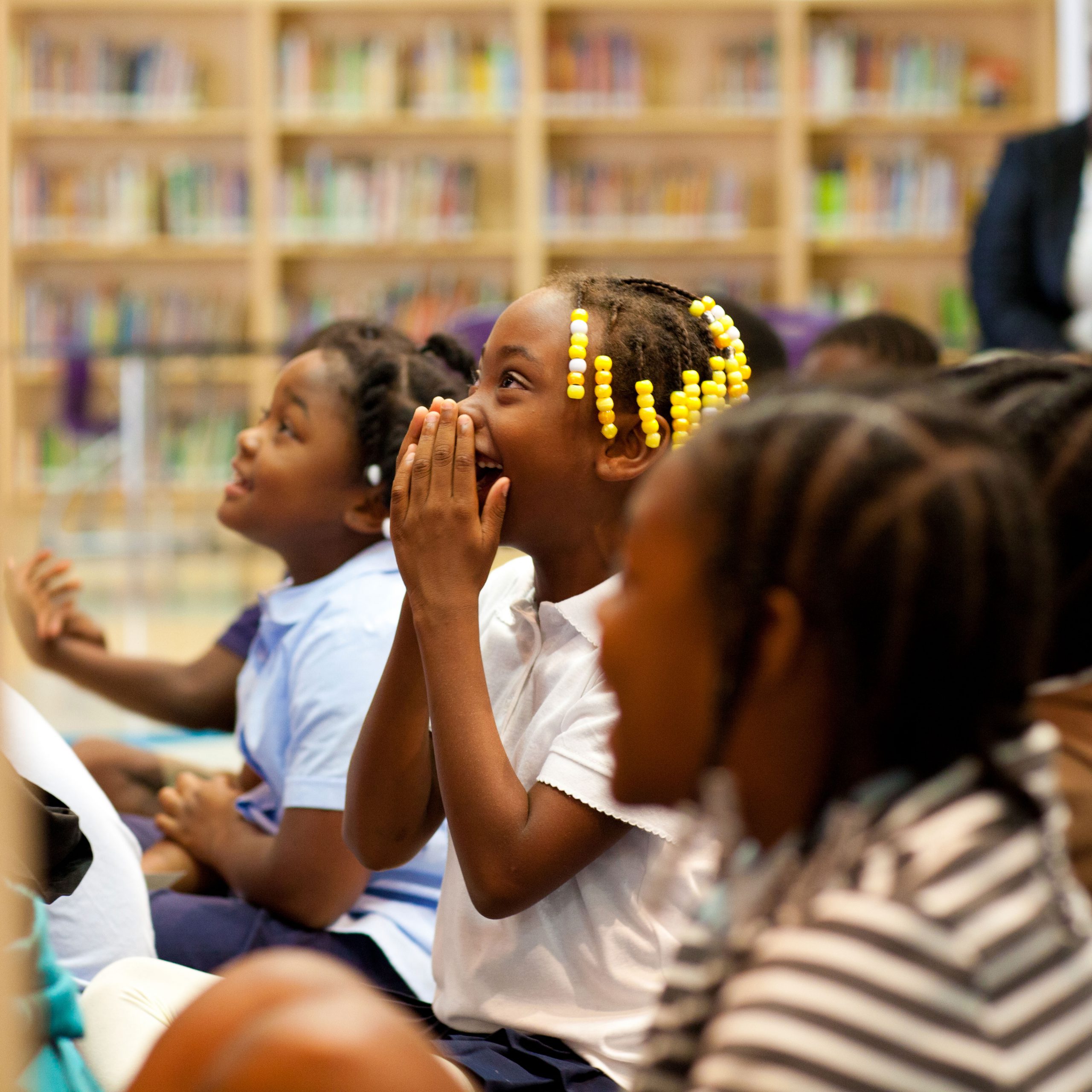plot
Why and How?
In 2013, The Harry and Jeanette Weinberg Foundation partnered with Gretes Research Services to create a summary of the most current research on the impact of school libraries. The Foundation engaged in this work to help better assess and develop current and future library initiatives. Among many takeaways, one has served as the core reasoning for the Baltimore Library Project. According to the Gretes report, “Universal findings from more than 60 impact studies conducted in 22 states conclude that schools with a well-equipped library, staffed by a full-time, certified librarian and appropriate support staff contribute significantly to gains in student learning.” Building upon that foundational perspective, the Library Project has also focused on addressing specific components of school libraries, learning, and literacy.

Reading proficiently in elementary school, specifically by the end of third grade, is a crucial marker in a child’s educational development. A national study by the Annie E. Casey Foundation found that one in six children who are not reading proficiently in third grade do not graduate from high school on time–four times greater than proficient readers.
Findings such as those of the Casey Foundation study underscore critical needs indicated in the most recent academic assessments of Baltimore City elementary school students. Data from the 2019 (the last year available due to COVID-19) Maryland Comprehensive Assessment Program (MCAP) shows that only 17.9 percent of Baltimore City’s third through fifth grade students met or exceeded grade level expectations for English Language Arts, compared to 42.9 percent of all of Maryland’s students.
In addition to increasing reading proficiency, the Library Project also intends to help offset the disruptive impact of income and resource inequities between various communities. According to the Baltimore Education Research Consortium (BERC), “The relationship between academic achievement and poverty is one of the most consistent findings in education research, and the income-achievement gap has been growing for at least 50 years.”
In 2019, Baltimore City Public Schools partnered with BERC to report on the specific connection between poverty and Maryland Report Card scores.
We also invite you to review other reports on the relationship between academic achievement and poverty.
Finally, numerous nationwide studies demonstrate positive correlations between well-resourced and staffed school libraries and increased academic achievement. Here are just a few examples, as well as links to other relevant articles:
“Studies confirm that more access to books and reading material in general results in more independent self-selected reading. More independent self-selected reading results in more literacy development.”
Krashen, S., Lee, SY, and McQuillan, J. 2010. “An analysis of the PIRLS (2006) data: Can the school library reduce the effect of poverty on reading achievement?” CLSA Journal, 34 (1).
“Research consistently shows that when children have access to good libraries with plenty of good books and with adequate staffing, they read more, and thus do better on reading tests. For children of poverty, libraries are typically the only possible source of reading material.”
Krashen, Stephen. 2004. The Power of Reading. Westport, CONN: Libraries Unlimited and Portsmouth, NH: Heinemann.
Process
Much of what the Baltimore Library Project has accomplished to date is the result of Baltimore City Public Schools receiving federal Qualified Zone Academy Bond (QZAB) funds. QZAB funds were used to renovate the core physical space at each school and ensure proper configuration, environmental abatement, quality air control, lighting, and flooring.
As of 2020, a total of more than 85 City school libraries have been renovated with more than $14.7 million in QZAB funds. Since 2011, the Library Project leveraged QZAB funds by bringing in additional partners and resources to maximize impact for the schools and their students. Specifically, the Library Project has leveraged $23.5 million in support from Baltimore City Public Schools, as well as several corporate, philanthropic, and individual donors.
However, as of 2018, QZAB funding was eliminated. The Federal Tax Reform Bill in 2017 eliminated all tax credit bonds, including QZAB bonds, as of 12/31/17.
Currently, the Capital Improvement Program (CIP) is the primary source of funding for library modernization and renovation, with allocations by state from the district capital improvement program. CIP projects must be submitted and approved through the CIP program process with the state. These restrictions did not exist with QZAB; however, all projects require approval by the state prior to awarding or using funds. Spaces may also be renovated when other private funding is available.
Review
Schools selected for the Library Project have secured funding through state, city, or other private sources and are chosen in cooperation with Baltimore City Public Schools. The Weinberg Foundation visits each proposed school and makes its final selections based on the following criteria:
-
Full-time certified librarian
-
Financial need
-
School stability and growth plan
-
Commitment to library expansion and its integration into the curriculum
The Weinberg Foundation will support up to 30 percent of the actual costs of each library. Through a separate contract, the Foundation will also provide operating support for up to six years to increase staff support in the library, facilitate various partnerships and enrichment programs, and provide additional professional development opportunities for each librarian. Each school community also commits parent and community volunteer hours to ensure the library is used and valued by all. Additional demographic data about students and teachers (from 2019 and prior) is available at Maryland State Report Card.
In addition to these resources, the Baltimore Elementary and Middle School Library Project maximizes partnerships to bring added value to each of the renovated spaces. A range of partners offers unique services and supports for the initiative as a whole, as well as the completed spaces.